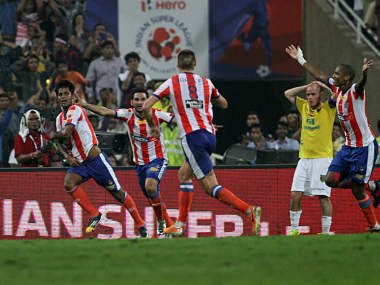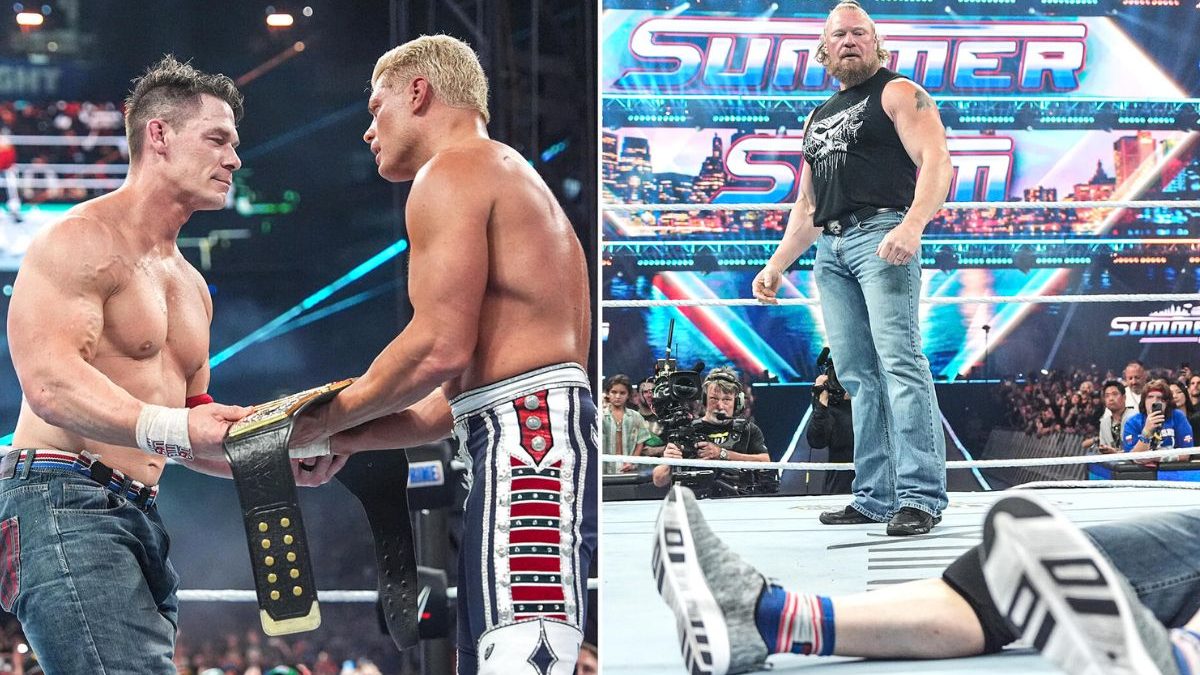The inaugural Indian Super League started amid concerns and doubts — the few bad games at the start also made many question the quality of the football. But on Saturday night, which ended in a blaze of confetti, fire crackers and delighted Atletico de Kolkata fans celebrating — much of the skepticism had been buried. The question asked now is not whether the ISL can continue — but how can it get bigger and better next year. For a change, India has now seen two sports emerge in the space of six months to much success — the equally well received (if not more) Pro-Kabaddi League and the ISL. With the back-to-back scheduling of the two exciting leagues — squeezed between an almighty amount of cricket — India has shown that it’s not a one-sport country. Here, if you pump money and take a risk — there will be takers. The ISL — called a ‘pilot project’ at its launch — now needs to continue some good work, make some changes and altogether do away with some of their policies. Here’s a quick list of how the league can now embark on its next big challenge — living up to season one. CONTINUE TO… Make good on their promises: Stadium infrastructure improvement? Check. Big name signings? Check. Cheap tickets? Check. Disciplinary action? Check. Incredible competition? Check. Grassroot development? Check. The ISL made sure clubs kept their promises and it pulled off a smooth competition. Good for a first season of football in India at least. [caption id=“attachment_1985421” align=“alignleft” width=“380”]  Rafique wheels away in delight after scoring the winner in the final. ISL[/caption] Keep the 6+5 quota system: This rule is in fact a 5+5+1 marquee player — who is a foreigner on every team. The five Indians in a team quota system is perfect. It gives the coaches enough room to play their best foreigners and give a chance to Indians also. If not for this, players like TP Rehenesh, Sandesh Jhingan, Arindam Bhattacharya, Jeje Lalpekhlua and Ishfaq Ahmed would still be unknown quantities. Give full power to the managers: Managers have dropped big players, played young unknowns and go about their business without too much interference. Management and business shouldn’t meddle with football and the ISL’s organisers, to their credit, haven’t messed with what happens on the pitch too much. Presentation and celebrity engagement: The ISL music has caught on and has managed to milk the crowd at stadiums. Be it a boring phase of touchline play or a drab 0-0 — the timing has been perfect. Celebrities doing laps of honour, engaging with the crowd and attending matches regularly is a sign of owners taking the league seriously. No other league in the world probably sees a fountain of sparkles go up when the teams walk out and the red rockets at kick off and during goals. This must continue. Giving media access: Has been phenomenally more than what journalists get in the IPL. There have been a few issues, but if you chase a story, you will most probably get it. There was uproar at certain games about the facilities — but accreditation, venue management and facilities were more or less in sync with other, more established leagues. Hero building: The ISL had to create heroes to generate excitement and attachment. And this applies to both Indians and foreigners. Iain Hume, Dudu Omagbeni, Fikru Teferra, Koke and Andre Moritz are a few names which helped crowds relate to teams. Support usually starts with a favourite player — and the ISL has managed to create enough heroes for fans to follow. WHAT NEEDS TO CHANGE AND GET BETTER Draft during the transfer market/Young marquee players: When David James was asked how the ISL could attract even bigger names in forthcoming seasons, his answer was simple: “The draft should take place during the transfer window – that means there will be more free agents to sign up. I’m 44 and maybe have a couple of seasons in me — but for the success of the league, top young players need to be attracted.” Scheduling: Franco Colomba, Zico and Antonio Habas have all been very vocal about the punishing ISL schedule. Some of the players, including Luis Garcia, have also expressed concerns: “Sometimes you have to catch two planes to get to a destination. There are just two rest days — and it’s the same rest period between big games like the knockouts too. So this needs to change. The organisers need to think this through for next year,” he said at the pre-final press conference. Garcia’s right — less rest, more injuries and fatigued players means bad quality of football. Scheduling is a huge challenge. More graphics and stats: The attack index that pops up at the bottom of your TV screens needs more stats. A simple percentage is not enough. Number of crosses, shots, through balls and passes need to pop up regularly too. What would be brilliant is to get a full-fledged Opta system which updates real time (like on Squawka) — with the minutest of detail given out. This is the age of numbers and stats — and the more ISL starts pumping out, the better the analysis of the games will be. It will also encourage football-specific discussions among enthusiastic fans. Help Indian coaches get license: “The number of coaches with an A Licence compared to the size of the country is ridiculous,” James said. The number is somewhere close to 60 coaches — and it is really ridiculous. Probably along with the quota for players, there should be a coach quota too. Clubs should encourage B and C license holders to train their players and add these hours to their work for a higher licence. It will be a great way to get more Indians involved in what really matters — developing talent. More marketing activities: Take a bus out into the city and make Nicolas Anelka, Alessandro del Piero, Robert Pires, Garcia and Joan Capdevila play five-a-side football with random people. Or keep an open training session for all the fans. More hoardings, more adverts in the newspaper and more coverage in vernacular media needs to be ensured. Penetration of the ISL hasn’t happened as much as it should have. Football needs to enter the interior of the nation, that’s when the rush to take up the game will start. Season tickets: There are some clubs which sold season tickets but not every one of them took this idea on board. This should in fact be a must. A season ticket ensures fan loyalty and income. It’s a no-brainer. Promise to take Indians to partner clubs: Fiorentina, Atletico Madrid and Feyenoord are all involved in the ISL. Scouts should come over and spend time at the league. That’s when a supposedly ‘fun’ and ’easy money’ tournament will get real. Playing abroad is the dream every Indian chases — and if they know they’re being watched, they’ll put on a better show. WHAT NEEDS TO BE DONE AWAY WITH Artificial turfs: Are a complete no-no. Too many players have complained about the one at Salt Lake and for training at Cooperage. Barring these from the tournament will leave no option for the money men to invest in natural grass surfaces. Real players play on real grass — not turfs that bounce oddly and gobble up knees and ankles. Trivial media rules: Like the one which doesn’t allow you to tweet from the stadium. There is no logic in this. Twitter is a huge traffic puller and interest generator — and if journalists who are at the venue covering a game can’t tweet or do live updates, then it’s a huge loss — social media is not just about quantity — it’s also about quality. Teams should be announced much earlier than 20-30 minutes — it adds to the build up and discussion. Social media battles: Are pointless really. Seeing a club tweet out that they’ve lost the battle on the pitch but are still fighting off it till midnight is a forced idea to engage people. There was excessive retweeting and no real contests that made the purist stand up and notice. Needless awards: Like the most energetic player for instance — has to be done away with. The ISL has succeeded in everything they’ve kept simple — so awards like this seem slightly unwarranted. If they really want to give three awards — name the three best players on the match in an order and give out cheques. That makes more sense.
The question asked now is not whether the ISL can continue — but how can it get bigger and better next year.
Advertisement
End of Article
Written by Pulasta Dhar
If there is one place Pulasta Dhar wanted to live, it would be next to the microphone. He writes about, plays and breathes football. With stints at BBC, Hallam FM, iSport, Radio Mirchi, The Post and having seen the World Cup in South Africa, the Manchester United fan and coffee addict is a Mass Media graduate and has completed his MA in Broadcast Journalism from the University of Sheffield." see more


)

)
)
)
)
)
)
)
)



